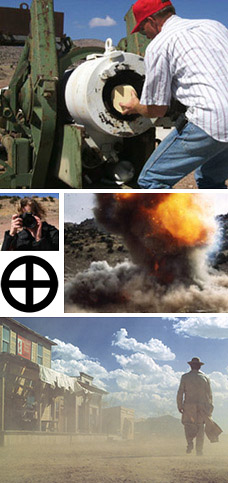
ago: University of Chi
cago Pre
ss, 1987 Dr. Christa Hockensmith
.
Tod orov, Tzvetan. The Conquest of Amer
ica: The Question
of the Other. Trans. Richard Howard. New York; Harper and Row, 1984.
Trexler, Richard C. "We Think, They Act; Clerical Readingsof Missionary Theatre in 16th Century New Spain." In Understanding Popular Culture: Europe from the Middle Ages to the Nineteenth Century,
ed. Steven Kaplan, 189-228. New York; Mouton, 1984.
Villagra, Caspar de. Historia de la Nueva Mexico. Mexico City: Imprenta del Museo Nacional, 1900. . Historia de Nuevo Mexico. Ed. Mercedes Junquera. Madrid; Historia 16, 1989. . History of New Mexico, 1610. Trans. Gilberto Espinosa. Los Angeles: Quivira Society, 1933.
On Colonial Forgetting: The Conquest of New Mexico and Its Historia
Jill Lane
The prestige that could only derive from the written word thus began its portentous career across the American continent.
ÑAngel Ram
a, The Lettered City The conquest of New Mexico has been so perfectly f
-
Agilent Gas Chromatograph-Mass Spectrometer with autosampler (GC-MS):
orgotten it is worth remembering. It has not been forgotten due to any lack of consequence; for the peoples of New Mexico its consequences were grave and irrevocable. No -
t banal, uninteresting, or too typical, the conquest was
literally derivative. To achieve its ends, it restaged key signifying patterns and tropes of earlier conquests that, by15 -
98 were readily available for reuse. In New Mexico, conqu
est met its end: the expedition crossing the Rio del Norte "discovered" not the lands or peoples of New Mexico (already "discovered" some decades before), but rather the limits of its own paradigm. In the story of New Mexico, then, we will find the discourse of conquest migrating toward and disgu -
ising itself in a new practice of writin
g, a movement dramatized in the exchanges and substitutions between the so-called last conquistador, Don Juan de Onate, and his soldier-turned-historian, Caspar de Villagra, whose 1611 Historia de la nuevo Mexico [sic] offered a "true" eyewitness account of the 1598 conquest. The -
prologue to Villagra's
Historia, a pindaric ode written by a royal scribe in Madrid, honors both the conqueror and the historian. Of the conqueror, the poem sings. Onate sought the ancient land From whence the Aztec came, A new Mexico at hand Wherein to gain his fame.... Another Cortes, brave, discreet, A new Columbus here. Following the spirit of Villagra's text, the verse una -
bashedly pens a hope that Don Juan de Onate will stand in the annals of history
among the "greatest" conquistadors and New World explorers. It traces a genealogy of conquest fame: Onate enters a "new" Mexico to redraw the boundaries of the Spanish empire, which were drawn by Cortes before him, in turn drawn by Columbus before him. He is last in a long line of conquistadors, and thus stands first on the expanding frontier of empire. The historian Gaspar de Villagra figures in this military genealogy, but on -
ly by corollary, having serve
d as captain under Onate's command: "In light of such a flame / Villagra has won his fame." While Onate served the Crown as a "true soldier" brandishing his "bloody sword," Villagra has rendered an equally important service by exchanging his own sword for the "worthy pen": -
Though each passing day and year
Ravage and-burn and cut and sear The marks he left will perish not. (Villagra 39) The marks of the sword, like that of passing days, are so many cuts and ravages; the mark of the pen, in turn, can rend - er those ravages immutable. In the historical text, the cuts and ravages take on the character of scars; discursively ordered into a text to be read and remembered by posterity. Thus the conqueror and the hi
storian of New Mexico, wie
- lding sword and pen on the far border of empire, assume complementary role
- s: through their combined efforts, the boundary and meaning of empi
- re are remembered anew. But Onate a
- nd Villagra lost t
- he wager with his
- tory. Who now remembers the deeds of this Ne
- w Mexican conquest, as heroic or otherwise? Who reads the Historia, as they still do El Cid or La Araucan
a? In sp Chemistry Laboratories work closely with the other divisions of ite or because of the twin efforts of the sword and the pen, the conqueror and the historian of New Mexico are little remarked in North or Central American cultural memory. To the contrary, rather than doubly seal and commemorate their future glory, the alliance between these acts of war and these acts of writing instead reveal and figure their own forgetting.
A Trope
The swo
rd and the pen: a grand trope of medieval Europe, a particular trope of the Spanish Golden Age (think of Cervantes), from which emerges a remarkable nexus of interrelated acts of war and writing that make up the world of Spanish conquest. We

